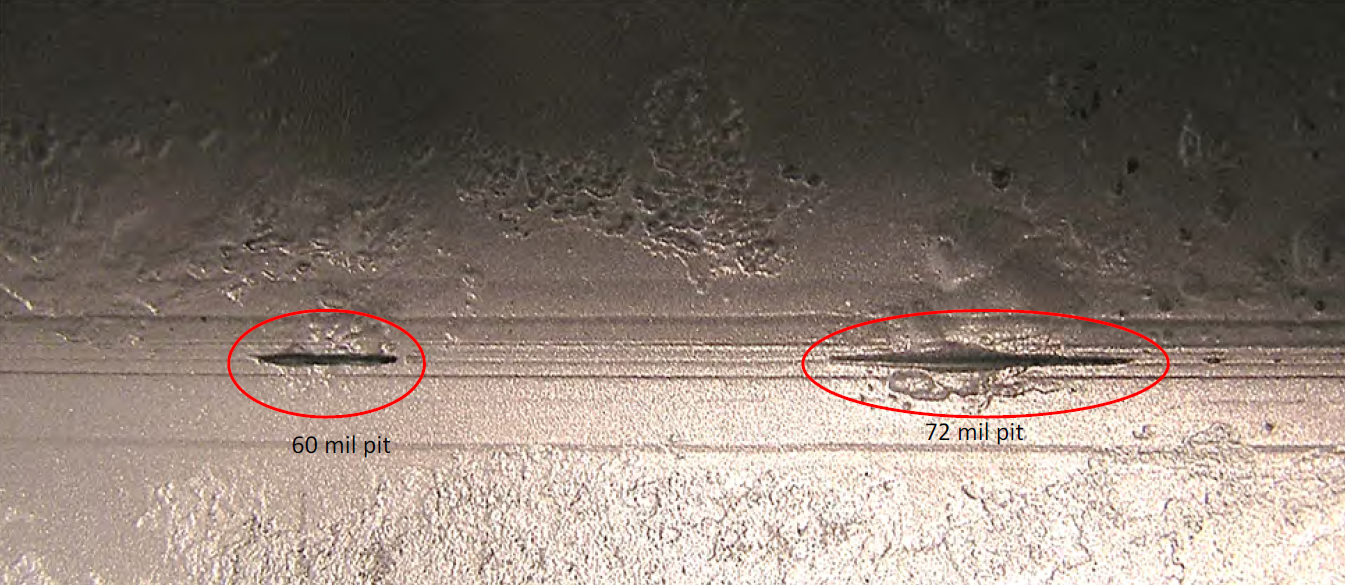Until recently, the fundamental cause of corrosion and pinhole leaks in water-based fire sprinkler systems was not well understood. As such, there were many misconceptions about what causes fire sprinkler pipe to fail, ultimately leading to costly pipe replacement.
One of the most prominent myths regarding corrosion was that fire sprinkler pipe was materially defective — this myth took many different forms and would range from a focus on pipe that was manufactured overseas to a focus on the recycled steel content of the pipe.
Weld Seam Corrosion: Definition and Causes
There are several reasons why the fire protection industry began to think that there was a material problem with fire sprinkler piping. In many cases during the corrosion monitoring process, what was mistaken for material defection could actually be attributed to a type of oxygen corrosion called Weld Seam Corrosion, also referred to as Knife Cut Corrosion.
The potential for this type of oxygen corrosion is created when pipe is electric-resistance-welded during the manufacturing process. The extreme heat used to weld metal creates a Heat Affected Zone (HAZ) which materially changes the structure of the metal grains. This HAZ is only created in the areas immediately adjacent to the weld seam. If the pipe is not heat treated and all the grains of metal are not normalized the HAZ will create an area in the pipe that will corrode preferentially.

Like all oxygen corrosion, Weld Seam Corrosion aggressively removes metal from the pipe wall. However, Weld Seam Corrosion is visually distinct and, unlike oxygen corrosion pitting, Weld Seam Corrosion creates a narrow trough along the length of the pipe (see above photo). Some cases of Weld Seam Corrosion are so distinct that the metal appears to have been removed through a machining process.
Changing NFPA Standards
NFPA 13: Standard for the Installation of Sprinkler Systems specifies the material properties for ferrous metallic fire sprinkler pipe through the inclusion of ASTM Standards A795, ASTM A53 and ASTM 135. ASTM 135 is the standard specification for electric-resistance-welded steel pipe and is the most common standard to which black steel pipe for fire sprinkler systems is produced. Weld Seam Corrosion is commonly found as a cause of pin-hole leaks because the majority of fire sprinkler pipe used in fire sprinkler systems is produced to ASTM 135.
-1.jpg?width=400&name=PAV-W%20installed%20(1)-1.jpg) In 2013, NFPA 13 globally addressed the fact that nitrogen is a viable alternative to compressed air in controlling corrosion in dry or preaction fire sprinkler systems. The next edition of NFPA 13 released in 2016 went a step further in addressing oxygen as the root cause of corrosion in fire sprinkler systems by requiring an air release vent to be installed on any wet fire sprinkler system that used metallic pipe (see photo).
In 2013, NFPA 13 globally addressed the fact that nitrogen is a viable alternative to compressed air in controlling corrosion in dry or preaction fire sprinkler systems. The next edition of NFPA 13 released in 2016 went a step further in addressing oxygen as the root cause of corrosion in fire sprinkler systems by requiring an air release vent to be installed on any wet fire sprinkler system that used metallic pipe (see photo).
As the fire protection industry continues to become aware of the root cause of corrosion in wet, dry and preaction fire sprinkler systems, the myth of materially defective fire sprinkler pipe will begin to fade away and the focus can be placed on implementing solutions that will prevent fire
sprinkler system leaks.
How to Control Weld Seam Corrosion
Controlling Weld Seam Corrosion requires limiting the amount of free oxygen introduced into the pipe network via atmosphere. For wet systems this can be accomplished by placing an air vent on the system to provide a means of escape for trapped air as the system is being filled with water.
For dry and preaction fire sprinkler systems, replacing the traditional air compressor with a nitrogen generator and adding an oxygen removal vent will allow the pipe network to be purged of oxygen gas.
*****
For a more comprehensive look at Weld Seam Corrosion examples and management techniques, download our in-depth white paper below.


